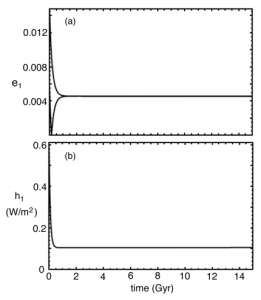

Tidal heating is not a significant phenomenon on Earth now, but conditions were different billions of years ago. “The tides generate friction, and friction leads to heat,” explained René Heller, a scientist at the Max Planck Institute for Solar System Research and a lecturer at the University of Göttingen in Germany. Tidal forces contribute to heating in Earth’s interior. As a result of this discrepancy, the planet puts on the brakes while the Moon speeds up in its orbit, slowly drifting away. That would be the end of the story if it weren’t for the fact that Earth rotates on its axis faster than the Moon orbits the planet. These tidal forces are the primary cause of tides on Earth. The Moon’s gravity exerts a stronger pull on the part of Earth that faces it (as opposed to the antipodes), stretching the planet into a slightly oblong, bulged shape. Paradoxically, the Moon and Earth are growing apart due to gravity. What is clear is that the Moon formed much closer to Earth than it is now, and it has been drifting away ever since. Although scientists have largely accepted the giant impact theory of lunar origin, debates about the timing of the impact and the mechanisms that led to the formation of the Moon are ongoing. The collision propelled molten debris into orbit around Earth, and over time the wreckage coalesced into the Moon. About 4.5 billion years ago, a Mars-sized body likely collided with Earth.


 0 kommentar(er)
0 kommentar(er)
